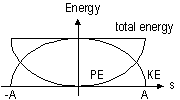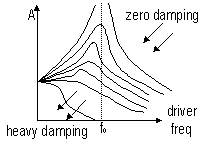

| for oscillation where at time = 0, x = 0 | for oscillation where at time = 0, x = ±A |
| x = A sin(ωt) = A sinθ | x = A cos(ωt) = A cosθ |
| v = dx/dt = Aω cos(ωt) = Aω cosθ | v = dx/dt = -Aω sin(ωt) = -Aω sinθ |
| a = dv/dt = d2x/dt2 = -Aω2 sin(ωt) = -Aω2 sinθ | a = dv/dt = d2x/dt2 = -Aω2 cos(ωt) = -Aω2 cosθ |








